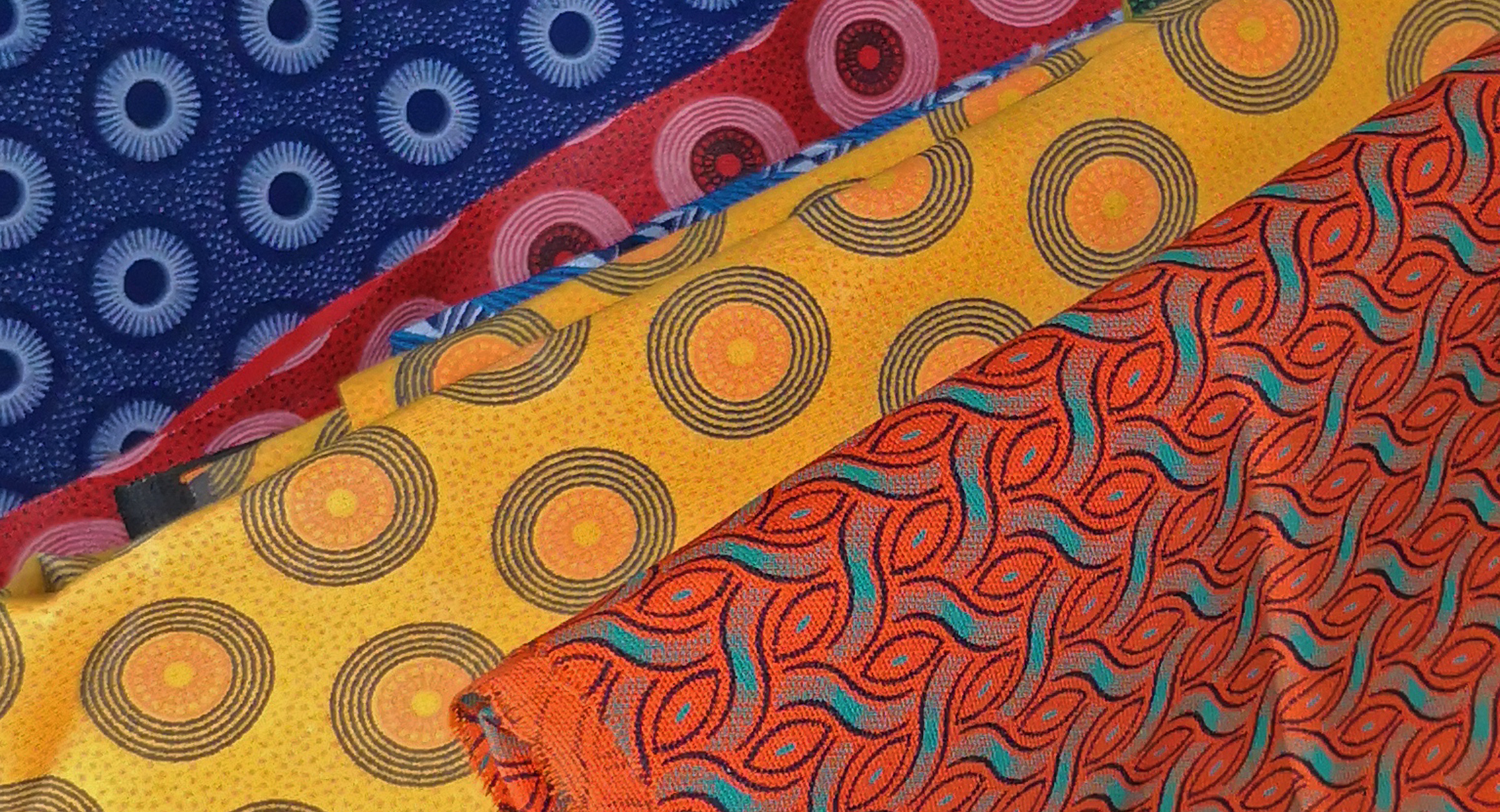Many of our products designed and made in South Africa are featuring the distinct “ShweShwe” Wax print fabric, so famously used on African traditional clothing and more and more incorporated on everyday items such as our VillageSecrets shoes, laptop bags, or accessories. This article provides you the historic context to this famous South African cloth.
Surprising to many, the history of shweshwe stretches from Asia to Europe, finding its home in Africa where it has evolved the most. We overview this journey of shweshwe, taking a look at its early origins, manufacturing, impacts, and trends through time to the present day.
EARLY SHWESHWE HISTORY: ORIGINS IN THE EAST THROUGH EUROPEAN TRADE
With the establishment of the Dutch Cape Colony in 1652, East Asian trade goods were increasingly routed through Southern Africa before reaching Europe.
At the time, naturally dyed indigo cloth from India and Bengal were a thriving import. The fabric featured lively and varied patterns. But it was famed the most for its exclusivity; The plant used for indigo dye could not grow in the cold European climate. Supply was limited and imports from the East Indies were the most viable option.
In the Cape, Dutch settlers purchased this exclusive indigo material from traders on their return journey to Europe. Here, the fabric was used by the Dutch, Khoikhoi, and slaves.
THE MEANING OF ‘SHWESHWE’ & INFLUENCE ON THE SOTHO, ZULU, AND XHOSA
In the 1840s, French missionaries gifted the Basotho Chief, King Moshoeshoe I indigo-printed cloth. Extremely pleased, the King endorsed the fabric and it spread in popularity throughout the Sotho and Zulu inhabitants of his domain. According to historians, the name ‘shweshwe’ derives from its royal influencer, King Moshoeshoe.
In 1858, Germans arrived at the Eastern Cape. They too brought indigo cloth. Xhosa women attending German missionaries adopted shweshwe and it gradually spread throughout the Xhosa people.
SYNTHETIC INDIGO AND NEW IMPORTS FROM ENGLAND
Development of synthetic indigo in Germany in the late 1800s skyrocketed European shweshwe production. By the 1940s, South Africa imported most of its shweshwe from England, including the famous brand: ‘Three Cats Shweshwe.’
DA GAMA TEXTILES – LOCAL PRODUCTION BEGINS
1982 was significant in the shweshwe’s history. A UK clothing brand, Tootal, invested in Da Gama Textiles, an Eastern Cape manufacturer, to produce shweshwe locally.
With the benefits of local production, Da Gama’s shweshwe flourished. New colours, such as chocolate brown and burgundy, were also introduced.
A decade later, Da Gama purchased the Three Cats trademark and developed it into the most popular shweshwe brand known today.
SHWESHWE MEETS THE 21ST CENTURY
Historically, shweshwe was still considered a fabric for mainly traditional uses. But in the early 2000s, the influences of global fashion on a post-apartheid South Africa had a contemporary impact.
Young South African fashion designers incorporated shweshwe in modern dress designs. And to much acclaim, these local creatives took their innovative shweshwe attire to the catwalks of Prague, Paris, and London.
2010’s TO TODAY – VARIETY
The 2010s marked a trend towards variety, with designers using shweshwe for versatile applications. Swimwear, brogues, necklaces, jackets, clutches, male underwear, and even pocket squares can now be found on the shweshwe market.
Shweshwe has a distinctive prewash stiffness and smell: the answer lies in its production and history when during the long sea voyage from the UK to South Africa, starch was used to preserve the fabric from the elements and gave it a characteristic stiffness. After washing, the stiffness disappears to leave behind a beautifully soft cotton fabric. The typical use of the fabric is for traditional ceremonies in the rural areas, thus ensuring a constant demand for this particular fabric.
In certain cases, special designs are produced for important occasions such as royal birthdays and national festivals.
Today this fabric has become fashionable beyond its traditional sphere of usage, with young South African designers often showing interest in this bit of national heritage.
The fabric is marketed to the wholesale and retail sectors throughout South Africa, who ensure sustainability by creating employment opportunities for people in the urban areas.
Da Gama Textiles is perhaps the only known producer of traditional Indigo Dyed Discharge Printed Fabric in the world.


